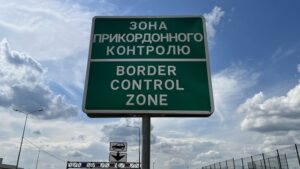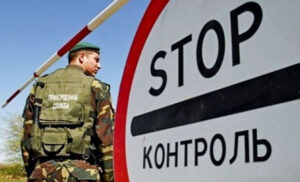
Based on the results of 2025, JSC Ukrzaliznytsia expects international passenger traffic to grow by 11% compared to 2024 – to 3 million passengers from 2.7 million, said Oleg Golovashchenko, director of the Passenger Company branch Oleg Golovashchenko, director of the Passenger Company branch of JSC Ukrzaliznytsia, at the VII International Conference “Production, Operation, and Repair of Rolling Stock” on Thursday.
According to his data, 1.8 million passengers were transported in January-September 2025. In pre-war 2021, the figure for international passenger traffic was 147,000, and in 2023, it was 2.3 million passengers.
As previously reported, Ukrzaliznytsia launched a daily train on the Kyiv-Bucharest route on October 10. In September 2025, the first section of the European gauge railway between Chop and Uzhhorod was opened in Zakarpattia.
At that time, the chairman of the board of JSC Ukrzaliznytsia, Oleksandr Pertsovskyi, noted that this project is an important stage in the development of the European railway network in Ukraine. According to him, in 2026, it is planned to electrify this section and start the construction of a European gauge railway in the direction of Lviv, which should be completed within two to three years.
In addition, during the Kyiv International Economic Forum (KIEF) in mid-October, Oleg Yakovenko, director of the strategy and transformation department of Ukrzaliznytsia, announced that the company, with European and state co-financing, plans to implement the Mostytska-Sknyliv project in the next two years and further develop the Lviv-Uzhhorod-Chop and Lviv-Chernivtsi-Vadul-Siret (Romania) corridors, which will allow Ukraine to begin restoring and realizing its unique geographical status.
Overall, the monopoly railway operator JSC Ukrzaliznytsia increased passenger traffic by 1.2% in the first half of 2025, to 13.52 million, which is 23% more than in January-June 2024.

Passenger traffic across the Ukrainian border in the sixth week of autumn, from October 4 to 10, decreased by 8.2% to 515,000, according to data from the State Border Guard Service.
According to it, the number of arrivals to Ukraine during the week decreased from 278,000 to 253,000, while the number of departures fell from 283,000 to 262,000.
The number of vehicles passing through border checkpoints also decreased to 129,000 from 137,000, while the flow of vehicles carrying humanitarian cargo increased from 481 to 501.
As of 9:00 a.m. this Saturday, according to the State Border Guard Service, the largest queue on the border with Poland consisted of 45 cars at the Shehyni checkpoint, with another 35 cars waiting at Krakivets, 25 at Ustyluh, and 10 at Hrushiv.
On the border with Hungary, small queues of 10 cars were observed at the Tysa, Vylok, and Luzhanka crossings, with another 5 cars waiting at Kosyno, while on the border with Slovakia there was a queue only at the Uzhhorod checkpoint — 11 cars.
Finally, on the border with Romania, 15 cars accumulated at the Porubne checkpoint, while there were no queues at all other points, nor on the border with Moldova.
The total number of border crossings this week was, for the first time in a long while, lower than last year’s (by 1.3%), because last year during the same week pilgrims were leaving after celebrating Rosh Hashanah. Therefore, the number of those leaving the country was significantly higher than those entering — 272,000 versus 250,000 respectively. However, vehicle flow was lower then — 124,000.
Last year, passenger traffic remained at about this level until a slight increase during the autumn school holidays, after which it fell by about 20% before the Christmas and New Year holidays.
As reported, since May 10, 2022, the outflow of refugees from Ukraine that began with the start of the war was replaced by an inflow that lasted until September 23, 2022, totaling 409,000 people. However, since late September, possibly under the influence of news about mobilization in Russia and “pseudo-referendums” in occupied territories, and later massive shelling of energy infrastructure, the number of people leaving began to exceed those entering. From late September 2022 to the first anniversary of the full-scale war, this surplus reached 223,000 people.
During the second year of the full-scale war, the number of border crossings leaving Ukraine exceeded entries by 25,000, in the third year by 187,000, and since the beginning of the fourth year by 189,000.
As Serhiy Soboliev, then Deputy Minister of Economy, noted in early March 2023, the return of every 100,000 Ukrainians home adds 0.5% to GDP growth.
In its July inflation report, the National Bank worsened its migration forecast: while in April it expected a net inflow to Ukraine of 0.2 million people in 2026, it now forecasts a net outflow of 0.2 million, matching this year’s estimate. “Net return will begin only in 2027 (about 0.1 million people, compared to 0.5 million in the previous forecast),” the NBU added. In absolute terms, the NBU estimates the number of migrants currently abroad at about 5.8 million.
According to updated UNHCR data, the number of Ukrainian refugees in Europe as of October 3, 2025, was estimated at 5.192 million (5.138 million as of September 2), and worldwide at 5.753 million (5.696 million).
Within Ukraine itself, according to the latest UN data from July this year, there were 3.340 million internally displaced persons (IDPs), compared to 3.757 million in April.

Passenger traffic across Ukraine’s border in the fifth week of autumn, from September 27 to October 3, decreased by 5.2% to 561,000, according to data from the State Border Service.
According to the data, the number of arrivals in Ukraine during the week decreased from 286,000 to 278,000, while the decrease in the outbound flow was more significant – from 306,000 to 283,000, which is explained by the end of the Jewish New Year “Rosh Hashanah” celebrations last week and the departure of pilgrims from Ukraine.
At the same time, the number of vehicles that passed through checkpoints increased from 133,000 to 137,000, while the flow of vehicles carrying humanitarian cargo remained approximately the same – 481.
This Sunday, as of 6:00 p.m., according to the State Border Service, the longest queue of 50 passenger cars was at the Ustyluh checkpoint, another 15 cars were waiting to cross the border at the Uhryniv checkpoint, and 10 cars had accumulated at the Shehyni checkpoint.
At the border with Hungary, there were queues of 20 cars at the Tisa and Luzhanka checkpoints, another 15 cars were waiting at the Vilok checkpoint, while at the border with Slovakia, there were queues of 15 cars at the Uzhgorod and Maly Berezny checkpoints.
At the border with Romania, there was a queue of 20 cars only at the Porubne checkpoint, while at the border with Moldova, 15 cars were waiting at the Mamalyga checkpoint.
The total number of border crossings this week is only 3.7% higher than last year, because then pilgrims came to celebrate Rosh Hashanah mainly during this week. Therefore, the number of those who left the country was less than the number of those who entered – 256 versus 285, respectively. The flow of cars was also lower – 128,000.
Last year, passenger traffic remained at approximately this level until a small surge during the autumn school holidays, after which it fell by about 20% until the Christmas and New Year holidays.
As reported, from May 10, 2022, the outflow of refugees from Ukraine, which began with the start of the war, was replaced by an influx that lasted until September 23, 2022, and amounted to 409,000 people. However, since the end of September, possibly influenced by news of mobilization in Russia and “pseudo-referendums” in the occupied territories, followed by massive shelling of energy infrastructure, the number of those leaving exceeded the number of those entering. In total, from the end of September 2022 to the first anniversary of the full-scale war, it reached 223,000 people.
During the second year of the full-scale war, the number of border crossings to leave Ukraine, according to the State Border Service, exceeded the number of crossings to enter by 25,000, during the third year by 187,000, and since the beginning of the fourth year by 180,000.
As Serhiy Sobolev, then Deputy Minister of Economy, noted in early March 2023, the return of every 100,000 Ukrainians home results in a 0.5% increase in GDP.
In its July inflation report, the National Bank worsened its migration forecast: while in April it expected a net inflow of 0.2 million people to Ukraine in 2026, it now forecasts a net outflow of 0.2 million, which corresponds to the estimate of the net outflow this year. “Net return will only begin in 2027 (about 0.1 million people, compared to 0.5 million in the previous forecast),” the NBU added. In absolute terms, the National
Bank estimates the number of migrants currently remaining abroad at about 5.8 million.
According to updated data from the UNHCR, the number of Ukrainian refugees in Europe as of October 3, 2025, was estimated at 5.192 million (as of September 2 – 5.138 million), and globally – at 5.753 million (5.696 million).
In Ukraine itself, according to the latest UN data for July this year, there are 3.340 million internally displaced persons (IDPs), compared to 3.757 million in April.

Passenger traffic across Ukraine’s border from August 16 to 22 amounted to 768,000, which is 1.3% less than the record level for wartime in the previous two weeks, according to data from the State Border Service on Facebook.
According to the data, while in the previous four weeks the number of people entering the country exceeded the number of people leaving by 15,000-32,000, with the approach of the new school year, the numbers evened out: the number of people leaving increased from 378,000 to 385,000, while the number of people entering decreased from 400,000 to 383,000.
The number of vehicles that passed through checkpoints this week increased from 144,000 to 145,000, while the flow of vehicles carrying humanitarian cargo decreased from 524 to 449.
This Sunday, as of 9:00 a.m., according to the State Border Service, the longest queue of 55 cars and 4 buses was at the Ustyluh checkpoint on the border with Poland. Forty cars and four buses were waiting to cross the border at the Krakivets checkpoint, while 19 buses had accumulated at the Shehyni checkpoint.
On the border with Hungary, the longest queue of 45 cars was at the Kosyno crossing, while at the Luzhanka checkpoint there were 30 cars, at Dzvinkove – 20, and at Tisa – 15.
At the border with Slovakia, 30 and 20 cars were waiting for inspection at the Uzhhorod and Malyi Berezny checkpoints, respectively, while at the border with Romania, there was only a queue of 30 cars at the Dyakove checkpoint.
The total number of people crossing the border this year is 4.2% higher than last year: during the same seven days last year, 370,000 people left Ukraine and 367,000 entered, and the flow of cars was also lower – 133,000.
As reported, from May 10, 2022, the outflow of refugees from Ukraine, which began with the start of the war, was replaced by an influx that lasted until September 23, 2022, and amounted to 409,000 people. However, since the end of September, possibly influenced by news of mobilization in Russia and “pseudo-referendums” in the occupied territories, followed by massive shelling of energy infrastructure, the number of those leaving exceeded the number of those entering. In total, from the end of September 2022 to the first anniversary of the full-scale war, it reached 223,000 people.
During the second year of the full-scale war, the number of border crossings to leave Ukraine, according to the State Border Service, exceeded the number of crossings to enter by 25,000, during the third year by 187,000, and since the beginning of the fourth year by 116,000, of which 80,000 were seasonal since the beginning of summer.
As Deputy Minister of Economy Serhiy Sobolev noted in early March 2023, the return of every 100,000 Ukrainians home results in a 0.5% increase in GDP.
In its July inflation report, the National Bank of Ukraine worsened its migration forecast: while in April it expected a net inflow of 0.2 million people to Ukraine in 2026, it now forecasts a net outflow of 0.2 million, which corresponds to this year’s estimate of net outflow. “Net returns will only begin in 2027 (about 0.1 million people, compared to 0.5 million in the previous forecast),” the NBU added. In absolute terms, the National Bank estimates the number of migrants currently remaining abroad at about 5.8 million.
According to updated UNHCR data, the number of Ukrainian refugees in Europe as of July 31, 2025, was estimated at 5.115 million (as of July 1 – 5.083 million), and worldwide – at 5.676 million (5.643 million).
In Ukraine itself, according to the latest UN data for April this year, there are 3.757 million internally displaced persons (IDPs), compared to 3.669 million at the end of last year.

Passenger traffic across the Ukrainian border during the week of August 2-8 increased by 1.6% to 778,000, setting a new record for wartime: last year, the highest passenger traffic was also recorded in August, but amounted to 737,000.
According to data from the State Border Service on Facebook, the outbound flow in the tenth week of summer increased from 367,000 to 376,000, while the inbound flow increased from 399,000 to 401,000.
Last weekend, 123,000-129,000 border crossings were recorded daily, and this Saturday, 120,000.
The number of vehicles that passed through checkpoints this week increased from 141,000 to 142,000, while the flow of vehicles carrying humanitarian cargo decreased slightly from 538 to 570.
“With the start of the summer season, passenger traffic through the checkpoints in the Lviv region has increased by 40%, and on weekends the load increases even more – by an average of 16% compared to weekdays,” the Western Regional Administration of the State Border Service said in a statement.
According to the report, the busiest checkpoints are Krakivets, Shehyni, and Ustyluh, with average traffic recorded at Hrushev, Uhryniv, and Rava-Ruska, while the least busy are Smilnytsia and Nizhankovychi.
This Sunday, as of 12:00, according to the State Border Service, the longest queue of 60 cars was at the Ustyluh checkpoint on the Polish border. Thirty-five cars were waiting to cross the border at the Hrushev checkpoint, 30 at the Uhryniv checkpoint, 25 at the Krakivets checkpoint, and 10 at the Shehyni checkpoint.
On the border with Hungary, the longest queue of 30 cars was at the Luzhanka crossing, while at the Vilok and Dzvinkovo checkpoints there were 20 cars each, at Kosino there were 15, and at Tisa there were 5.
At the border with Slovakia, 35 and 25 cars were waiting for inspection at the Uzhgorod and Maly Berezny checkpoints, respectively, and at the border with Romania, there were queues of 60 cars at the Porubne checkpoint and 15 at the Dyakovo checkpoint.
The total number of people crossing the border this year is 5.7% higher than last year: during the same seven days last year, 356,000 people left Ukraine and 380,000 entered, and the flow of cars was also lower – 137,000.
As reported, from May 10, 2022, the outflow of refugees from Ukraine, which began with the start of the war, was replaced by an influx that continued until September 23, 2022, and amounted to 409,000 people. However, since the end of September, possibly influenced by news of mobilization in Russia and “pseudo-referendums” in the occupied territories, followed by massive shelling of energy infrastructure, the number of people leaving exceeded the number entering. In total, from the end of September 2022 to the first anniversary of the full-scale war, it reached 223,000 people.
During the second year of the full-scale war, the number of border crossings out of Ukraine exceeded the number of crossings into the country by 25,000, according to the State Border Service, by 187,000 in the third year, and by 128,000 since the beginning of the fourth year, of which 108,000 were seasonal since the beginning of summer.
As Deputy Minister of Economy Serhiy Sobolev noted in early March 2023, the return of every 100,000 Ukrainians home results in a 0.5% increase in GDP.
In its July inflation report, the National Bank worsened its migration forecast: while in April it expected a net inflow of 0.2 million people to Ukraine in 2026, it now forecasts a net outflow of 0.2 million, which corresponds to the estimate of the net outflow this year. “Net returns will only begin in 2027 (about 0.1 million people, compared to 0.5 million in the previous forecast),” the NBU added. In absolute terms, the National Bank estimates the number of migrants currently remaining abroad at about 5.8 million.
According to updated UNHCR data, the number of Ukrainian refugees in Europe as of July 31, 2025, was estimated at 5.115 million (5.083 million as of July 1), and 5.676 million worldwide (5.643 million).
In Ukraine itself, according to the latest UN data for April this year, there were 3.757 million internally displaced persons (IDPs), compared to 3.669 million at the end of last year.

The State Border Service of Ukraine reports a 40% increase in passenger traffic through checkpoints in the Lviv region on the border with Poland since the start of the summer season, and on weekends – by another 16% compared to weekdays.
“One of the busiest checkpoints remains Shehyni due to repair work on the Ukrainian side,” the agency said in a Telegram channel on Thursday.
In particular, 150 cars have gathered at this checkpoint, 100 at the Krakivets checkpoint, 30 at the Hrushev checkpoint, 25 at the Uhryniv checkpoint, and 10 at the Nyzhankovychi checkpoint. Only the Smilnytsia and Rava-Ruska checkpoints are operating without delays.
“To speed up the processing of citizens, border guards have stepped up their work: during peak hours, the number of patrols has been increased and additional automated workstations have been deployed. Regular meetings are also held with Polish colleagues to jointly seek solutions that will help speed up border crossings,” the State Border Service said.
As reported, passenger traffic across the Ukrainian border during the week of July 26 to August 1 increased by 1.7% to 766,000, setting a new record for wartime: last year, record figures were recorded in August and amounted to 737,000. The outbound flow in the ninth week of summer remained almost unchanged at 367,000 compared to 369,000 a week ago, while the inbound flow increased from 384,000 to 399,000.